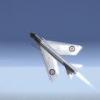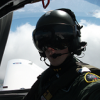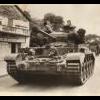-
Posts
1,011 -
Joined
-
Last visited
-
Days Won
1
Pielstick last won the day on January 15 2014
Pielstick had the most liked content!
About Pielstick
- Birthday 04/07/1981
Contact Methods
-
Website URL
http://
-
ICQ
0
Profile Information
-
Gender
Male
-
Location
Kent
-
Interests
Any and all types of aviation and aviation history, flight simulation, aircraft modelling - particularly 1/48th British subjects.
Recent Profile Visitors
4,727 profile views
Pielstick's Achievements

Very Obsessed Member (5/9)
19
Reputation
-
I've had both FS2004 (aka FS9) and FSX run fine on both Windows 8 and Windows 10. The problem comes with some of the addons.
-
Sometime last year a nifty little freeware programme for X-Plane was released called Ortho4XP. It lets you create your own photoscenery using publically available data and orthographic imagery. I started poking around with it last month and was impressed by the results. I've now got all of Great Britain covered with ZL17 (1.2m resolution) photoscenery and combined it with the excellent GB Pro object placement scenery. Here's a sample of how it all looks: What's more I didn't have to spend a penny on this scenery. Pretty impressive really!
-
Thanks Neu, some interesting points to ponder. I'll write more tomorrow when I get a chance.
-
Remember when India announced it had selected the Rafale for its MMRCA requirement? At the time it was said that although both Rafale and Typhoon met the technical requirements, Rafale was significantly cheaper and as such was selected. Quite a few eyebrows were raised at this and there was some speculation that Dassault had bid way below cost. Well check this out: http://www.dnaindia.com/india/report-dna-exclusive-100-price-escalation-on-rafale-fighter-aircraft-to-rs-175-lakh-crore-likely-to-dent-iaf-s-strike-capability-1957107 Sources in India are saying that the cost of an Indian Rafale has increased by over 100% since it was announced as the winner of the MMRCA competition. Have Dassault done a Ryanair on the Indians and reeled them in with a low headline cost and then stung them with lots of hidden extras costs? Also interesting to note that Eurofighter will be having a presence at India's biggest trade airshow this year.
-
I think that the AoA would only need to be increased to achieve the same lift if the true airspeed remains the same? The same indicated airspeed would yield the same AoA if all other factors were the same. I may be wrong though? Critical Mach, that sounds pretty plausible, and you're right this would be achieved sooner at higher altitude.
-
The problem there being that the AWACS will be sitting pretty deep behind lots of air defences and pretty hard to get to. The Russians have some interesting ideas though involving very big missiles which home in on the AWACS' radar emissions... whether or not they can take them beyond a model at a trade show is another matter. I also seem to remember reading a few accounts of some upsets in exercises when the RAF contingent got uncomfortably close to the enemy AWACS. There is a train of thought that AWACS may be of less importance in the future, with the amount of datalinking going on it's possible that you could maybe get better coverage by simply having all the sensors on and above the battlespace sharing their data. It's also a lot more robust as you don't have a single high value asset which might be of interest to said big Russian missiles
-
I even manage to win an argument with my wife on occasion! I'll have a better look at some of the other articles in that blog later, you may very well be right. To be fair I do think the Americans spend an unnecessary amount of money (to put it mildly) on defence, but as you say that's political and another discussion entirely. Still, I always find such dicussions interesting!
-
Check out the F-22's air intakes and the leading edges of the wings and tail surfaces when it turns towards the camera. As I've said already, whatever you make of the motives or indeed bias of the blog - the physics can't be argued. Sitting up in the stratosphere, with no clouds or precipitation, travelling around with two 160kN class engines and frictional heating of the airframe.... with an atmospheric window between 3 and 4 microns where IR atmospheric attenuation is only 10%...... it doesn't take a massive stretch of the imagination to see that an aircraft like the F-22 could potentially have a hole in it's stealth. However, I understand we are talking about the F-22, and Heaven forbid it should have a chink in its infallible stealth armour. Could you please point out how and why The Boresight trashes US defence development? I genuinely don't know who wrote that blog or what their association or interests are. I simply Googled IR detection systems and found it was a pretty good explanation of how a modern IRST might be able to detect a supersonic stealth aircraft. As I explained to Giorgio, there's quite a bit in the blog I don't necessarily agree with. I linked it for the explanation of how IR might be a viable method of detecting a stealth fighter at beyond visual ranges. I stand by my comments about RAND - was it not set up by Douglas to provide research to the US Government? Last time I checked Douglas were a company in the business of selling aircraft to the US Government. Is RAND not funded by both the US Government and private corporate interests? Given where it gets its money from, is RAND completely free of commercial or political interests? I'll ask again... If EOTS (not EODAS as I said earlier) on the F-35 can detect and track a ballistic missile from over 400nm, what's so hard to believe about PIRATE being able to detect and track an F-22 at 50nm? Particularly given F-22's huge engines and frictional heating of the airframe especially at supercruise. Now my point is 50nm is way beyond the range at which F-22 could currently take a realistic shot with an AIM-120C. If we give the F-22 a brand new two stage motor AIM-120D 50nm could still be a real push when launched against a target with the kinematic characteristics of Typhoon. In which case there is a significant chance the F-22 gets detected before he gets that missile off, which then presents a problem for the whole "5th gen" stealthy first look first shot kill chain. I'm not trying to paint F-22 as a piece of junk or Typhoon as being better. They are fundamentally different aircraft. However, there are plenty of people who think that the F-22 is all unicorns with rainbows coming out of their bums - a notion that the USAF and Lockheed would love to promote because of the astronomical - obscene even - amounts of money spent to get 187 airframes. My argument is that there is potentially a flaw in the 5th gen concept that can be exploited by supposedly inferior fighters.
-
Perhaps you misunderstand what I meant by "vintage". I wasn't inferring the aircraft were old. However, I'm sure you are aware of the Soviet practice of exporting downgraded so called "monkey models" to non-Warsaw Pact clients. Downgraded radar, weapons, defensive avionics etc. In the case of the Serbian MiG-29s in 1999 they had been starved of spare parts for years and were flying with no functioning radar or radar warning receiver. As for the blog I linked, I agree there are quite a few things in the blog I don't agree with. As you say, much is made of the AIM-54 which I believe was a somewhat overrated missile. However, the point about IR detection of aircraft like the F-22 remains. Screaming around the stratosphere with two massive F119 engines strapped to your bum, there really isn't a lot you can do to hide yourself from a good IRST. To coin a phrase used by a famous Scottish engineer - Ye cannae change the laws of physics! I think maybe you're thinking I'm jumping to a conclusion that I'm not. I'm not trying to infer that Typhoon or another IRST equipped fighter has an advantage over F-22 in the BVR arena, I'm simply saying that there may be a bit of a hole in the whole stealth first look first shot first kill philosophy when it's entirely conceivable that a modern IRST might be able to detect an F-22 before he gets that first shot. I also think it's maybe a bit of a stretch to say that a contemporary fighter like Typhoon, Rafale, Super Hornet which although not stealthy per se, feature RCS reduction - particularly from a frontal aspect - can be detected - even by an APG-77 - at 150nm. If we're going to credit the APG-77 with such speculative abilities then in the interests of fairness at least credit PIRATE with the ability to detect an F-22 at 50nm+.
-
On the subject of using an IRST to detect F-22, check out this video: http://www.youtube.com/watch?v=PLzD1SCk__g Note how little difference there is between the Typhoon, F-16 and F-22. Also note the massive heat plume when the F-22 uses its reheat. Now have a read of this, as it explains fairly well what I've been trying to say all along: http://theboresight.blogspot.co.uk/2009/07/airborne-infrared-and-supersonic.html
-
I agree a ballistic missile has a huge IR signature, but remember it was 400nm distant. If you want to break it down to horribly simple and apply the inverse square law, the ballistic missile at 400 miles is 8 times more distant than the fighter at 50 miles. That means the IRST would be getting 1/64 or a bit over 1.5% of the IR radiation it would be getting if the ballistic missile were at 50 miles. That doesn't take into account the atmospheric attenuation which should mean even less of that IR radiation would make it from the ballistic missile to the IRST. As you say, 50nm for a fighter sized subsonic target is not at all unreasonable. With regards to BVR, how many aircraft have actually been shot down in aerial combat since GW1? Definitely not enough to conclude that BVR technology has finally delivered, especially when we consider the types and vintage of aircraft shot down. One, or in this case a dozen or so swallows does not a summer make. Again, I wonder what the PK of the latest AMRAAM is when launched at near maximum range against a target equipped with a modern defensive suite like DASS or SPECTRA, and with the kind of kinematic performance offered by the likes of Typhoon? Probably not as good as the Raytheon salesman would like us to believe.
-
I'll have to take your word on F-22's IR reduction measures, but I'm far from convinced. 90nm+ for an AIM-120D would be under ideal conditions and a non-manoeuvring target. I suspect the PK against a manoeuvring target running with a modern defensive suite at this range is rather poor. BTW, forgot to tell you that I absolutely agree with your comments above about Typhoon being very expensive and a poor multi role choice. I'd go further and say the failure of the partner nations to get off their backsides and develop Typhoon to meet its potential in a timely manner has almost certainly cost it several very lucrative export orders, and has perhaps left it as something of a white elephant. Then again I'm not much of a fan of Rafale or Super Hornet either. At the moment I'm quite liking the Gripen, and the Gripen NG in particular. I was most impressed to read that the eight Gripens sent by the Swedish AF to support operations in Libya in 2011 required only 35 groundcrew. Likewise when the Czechs sent their Gripens to do the NATO Baltic air policing they only needed something like 65 support staff, yet when the Germans sent their Typhoons they needed 200 support staff. It would seem that if you want bang for your defence buck then Gripen NG is going to be hard to beat.
-
To be honest I don't know a lot about infra red attenuation in the atmosphere, but the German guy reckons there are two wavelenghts where attenuation is reduced and these are "atmospheric windows". I'd have to read up on it to get a better idea though. If EODAS on F-35 can detect a ballistic missile at over 400 miles then I don't see why PIRATE can't detect a fighter at 50 miles. The bad weather and atmospherics have been raised before, and again the counter point is you don't get much in the way of cloud or rain at the stratosphere where these aircraft would be operating. I absolutely stand behind my belief that "5th gen" is a marketing term. The term itself was never used until F-22 came along. The very term itself infers that everything else is markedly inferior or obsolete - which of course is very helpful when you are trying to convice politicians and tax payers to cough up astronomical sums of money for the aircraft. Let me give you an excellent example of how marketing terms get thrown around and abused by people trying to sell very expensive aeroplanes. Early on in the F-22 days Lockheed and the DoD decided the term "supercruise" could only be applied to aircraft that could sustain flight at M1.5 without the need for reheat. Perhaps it was a coincidence that by this definition F-22 was therefore the only fighter that could "supercruise"? Indeed supercruise became one of the features of our new "5th gen". Fast forward a few years when when we don't need to sell any more F-22s but we do need to seel the F-35. Now that's also got the 5th gen label and so therefore must be able to supercruise. Wait a minute, it can't do M1.5 without reheat. It can only maintain a M1.2 dash with a little bit of reheat. And so it was the definition of supercruise was changed so it could be applied to the F-35. Did I mention that F-35 has the kinematic performance of an F-4? What gen is the F-4? Well nobody used the rather arbitrary generation system to classify fighters when the F-4 was around so let's retrospectively call it 3rd gen. So we've got a 5th gen F-35 with the transsonic acceleration and sustained turn performance of a 3rd gen aircraft. We need to sell lots of them though so let's keep calling it 5th gen because that sounds good. See what I'm getting at? If F-22 is of a new generation, distinct and superior to all that has gone before... why does it not have an IRST? Why does it not have a helmet mounted display/sight/cueing? Why does it not have a HOBS missile? Why is its primary weapon a rather old missile that has enjoyed rather mediocre success in real shooting wars? The apparent design philosophy behind the F-22 was to make a fighter that could move undetected in contested airspace and get the first look, first shot and first kill, all BVR. That's fair enough but it all kind of comes apart when you see that BVR aerial combat technology has consistently failed to deliver on its promises - the AIM-120 itself only having hit a little more than 50% of its targets when fired for real. in 1999 a Serbian pilot flying a 1980's era export grade 9.12 MiG-29 with no functioning radar, RWR, jamming or countermeasures managed to evade THREE AIM-120s before he was hit by the fourth one. How well would an AIM-120 fare against an aircraft with a defensive suite in the same class as DASS or SPECTRA? As I outlined above, the key to getting a missile to actually successfully intercept its target is in ensuring it gets there with sufficient energy to make the intercept. This is the weak point of the AIM-120, including the latest AIM-120D, and the strength of a missile like Meteor. Whilst this may not present much of a problem if you're trying to shoot down a large aircraft like a bomber or transport, against a fighter target, particularly with high energy manoeuvre characteristics like Typhoon, it becomes a real problem. So it's not too much of a stretch to say that maybe, the F-22's proponents are making the very same mistakes which were made with the F-4 fifty years ago - putting too much faith in BVR technology. In which case F-22 will find itself going toe to toe with far cheaper and more numerous aircraft and most of its qualitative superiority is lost, especially when you take into account F-22's lack of helmet cueing and HOBS missile. Ah, but the F-22 was never intended to go WVR I hear you say! In which case then why has it got a gun? Why did the USAF/DOD select the more agile YF-22 instead of the faster and more stealthy YF-23? I think the F-22 is an excellent fighter, but I don't buy the marketing and PR hype that surrounds it. Think about it for a second... given it's the most expensive fighter to ever be produced, the astronomical sums of money spent on it and political controversy it has generated, would it ever be acceptable or indeed permitted to be presented as anything less than an all-conquering death machine with big rays of instant-death "I WIN!" awesomeness coming out of its bum? Consider for a second the mind boggling amount of money the Americans spend on defence, the massive interests that are involved in keeping that huge flow of money going into American defence firms and you possibly begin to see what is perhaps the real motivation behind the likes of F-22, F-35, DDG-1000, SSN-21, etc. This is of course the country that doesn't bat an eyelid at spending $682 billion on defence in 2013 - 39% of the entire world's defence spending, the same as the next eleven biggest defence spending countries combined - yet goes absolutely potty when someone suggests a government subsidised universal healthcare programme. However, that would be erring into politics, which is verboten here
-
Back in September when I was doing my Chief Engineer's ticket there was quite a heated discussion in the classroom about how torque is transmitted to the ship's propeller - is it via shear in the coupling bolts or is it via friction between the coupling faces in the transmission line? Nobody could agree so the lecturer contacted a couple of companies that make power transmission components for ships and asked them. A design engineer at one company got in touch and explained that the torque transmission is around 85% shear, and 15% friction. It reminded me a lot of the Bernoulli vs Newton arguments with aerodynamic lift - Bernoulli does the lion's share of the lifting, but he gets a little help from Newton
-
Graham I think you might be right about the engine having quite a lot to do with it. I think the Sabre only had a single stage supercharger? Like I said, I had problems reconciling the popular reasoning that the Typhoon was a poor interceptor because of its performance limiting thick wing, yet at the same time it was faster than the Spitfire V at low altitude and the only RAF fighter capable of catching a Fw190 in 1942. Be careful about attributing aerodynamic lift to Bernoulli.... Newton has got a say in it as well. Otherwise aeroplanes couldnt fly level upside down







.thumb.jpg.76f12b87ce9ca9929c9aabdcf8f9d2dd.jpg)





